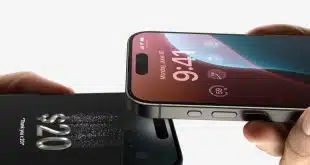Consumers and merchants may be primed for it.
New technology, consumer affinity for digital payments, and the allure of cheaper payment processing may be setting the stage for broader use of pay by bank in the United States.
Paying by a bank account is not unfamiliar to most consumers. Already, many use the electronic payment method to pay mortgages, rent, utility bills, and car payments. That usage may soon evolve beyond traditional obligations to include online commerce.
The factors driving this activity have been around a while, but the advent of updated technologies, growing consumer ease with digital payments, and a ready merchant disposition to accept whatever payments consumers choose to use—especially if they are cheaper than traditional credit and debit card processing—appear to be setting the stage for broader use of pay by bank.
The questions are, how likely is it that this wider market will develop soon, and how may it manifest itself in the United States, a traditionally card and cash-oriented consumer-payment market.
Defined as a payment direct from a consumer’s bank account or a merchant’s bank account, pay by bank sidesteps the credit and debit card rails. That’s a tempting proposition for merchants, assuming pay by bank could be a cheaper form of payment.
As with any payment-method introduction or expansion, it takes more than merchants to broaden acceptance. Consumers have to want to pay with it and financial institutions have to see value in it. The formula may be well known, but getting the recipe to turn out is another issue.
Still, many are working toward the eventual expansion of pay by bank. Milwaukee-based processor Fiserv Inc., for example, already is preparing.
“The ability to do account-to-account payments has been around a long time,” says Chris Rennie, Fiserv’s director of product management. Pay by bank is the ability to expose that experience in a prominent way digitally, pair it with more modern user-interface schemes, take advantage of modern card-on-file technology, and create a new experience, he says.
Current pay by bank incarnations use the automated clearing house system, which, according to open-banking specialist Plaid Inc., may levy a fee ranging from pennies for smaller transactions up to 1% to 1.5% of the transaction value, often with a $5 cap. That compares to a credit card processing fee typically ranging from 1.5% to 3.5%. Fiserv says pay by bank’s cost can be up to 50% less in fees.
Incidentally, Visa Inc. attempted to acquire Plaid, but withdrew from the deal following U.S. Department of Justice concerns and instead acquired Tink AB, a European open-banking company that will form the basis of a pay by bank push the card network announced in May.
At bottom, pay by bank is “really about enabling merchants to accept this tender and get the lower cost and opportunity to consumers,” Rennie says. Indeed, merchants have been complaining about credit and debit card acceptance costs for years, with a 19-year-old interchange lawsuit reaching a settlement only recently, though official acceptance is pending.
‘Not in a Coffee Shop’
The prospect of lower fees for an electronic payment is enticing to merchants. So, given much lower fees, sellers will actively seek pay by bank services, many observers say.
Credit card processing fees—which range from 1.5% to 3.5%, according to Bankrate.com—are a longstanding merchant pain point.
“Nobody wants to keep paying these interchange fees, with so many parties in the transaction,” says Booshan Rengachari, chief executive and founder of Finzly, a banking-technology provider with U.S. headquarters in Charlotte, N.C. A base interchange rate may have other fees tacked onto it, resulting in the discount rate that includes all fees.
But lower fees alone won’t be enough to ignite pay by bank. Consumers will have to view pay by bank transactions as being as easy to complete as a credit card transaction, whether that’s made with a dip, a tap, or online.
“Consumers are used to pay-by-card at point of sale, and with wallets storing card credentials, it has been easier for consumers to rely on cards for online transactions as well,” says Suresh Ramamurthi, chairman of NetxD Inc., a digital-banking and asset-tokenization platform with U.S. headquarters in Lawrence, Kan. “It is important for merchants to make the pay-by-bank option as frictionless [as possible] to drive adoption.”
In some markets, a pay by bank transaction might have a fee of 0.2% or 0.3%, says Nilesh Vaidya, global industry head for retail banking and wealth management at Capgemini, a technology consultancy.
But even with a price incentive, pay by bank still needs consumers to want to use it. That means creating use cases and making it easy to use.
Vaidya says the first opportunities will be found in higher-value purchases that would otherwise incur high card-processing fees. “The opportunity will not [be] in a coffee shop,” he says. “It’s more [likely] if someone is buying a refrigerator or making a down payment on a car. These kinds of high-value payments will be key.”
This assumes, though, that consumers would be comfortable forgoing credit card rewards, especially those on larger transactions. “High-value transactions are going to be challenging,” says Ben Isaacson, senior vice president of product strategy at The Clearing House Payments Co. LLC. TCH operates the Real Time Payments network and other payment services. “I understand why merchants don’t want to pay 3% credit card interchange. I also understand why the customer wants the 2% reward.”
‘A Major Inflection’
Pay by bank could create questions for financial institutions like Michigan State University Federal Credit Union, East Lansing, Mich. Agreeing that interchange costs will be the top motivator for merchants to adopt pay by bank, Ben Maxim says, as an issuer, the credit union will have choices to make. Maxim is chief digital strategy and innovation officer at the credit union and chief operating officer at Reseda Group, a credit union service organization the credit union owns.
“One of our biggest non-fee revenue [sources] is interchange,” Maxim says. Additionally, the credit union is growing and could reach $10 billion in assets in a couple of years, the point at which the interchange it could assess for debit card transactions would be capped by the Durbin Amendment. “Then layer on less spend on credit cards, that could exacerbate the matter. It definitely puts lots of pressure on [us] to find alternative revenue sources,” he says.
While pay by bank’s potential fee diversion may be a concern for card issuers, “consumers don’t care what the rails are,” Maxim says. “But they care about the use.” If they want to tap a card or smart phone against a point-of-sale terminal, he says, it’s often because they view it as easier to do than dipping or swiping a card.
Broader payments-industry trends also could affect pay by bank development. Financial institutions will consider it as their fintech competitors adopt it. “What’s really going to make it viable is that the banks embrace the fact they want to remain in the conversation,” Maxim says. “Whoever the merchants start to favor, that’s who’s going to win.”
As a fintech, Link Money is plowing ahead on pay by bank. In February, e-commerce platform Radial Inc. added the San Francisco-based firm’s Pay by Bank service as an online checkout option. Radial pegs the potential reduction in fees at as much as 70% to 80%.
And Pay by Bank can help reduce fraudulent transactions because consumers are required to authenticate payments in their banking apps, Radial says. The liability for Pay by Bank transactions lies with Radial.
“There’s been a major inflection in the desire for large enterprise merchants to launch pay by bank in the U.S.,” says Eric Shoykhet, a Link Money cofounder. The credit card interchange settlement is one factor in that consideration because, if approved, the agreement could limit surcharges to 1% of transaction value, down from as much as 4%. As surcharging may come under more consideration from merchants, they also are thinking about the impact on consumers, who may not like the extra fees.
“Because of that, a lot of merchants who are planning to [surcharge] are starting to think about if the customer faces surcharges, what is a low-cost way to provide payments,” Shoykhet says. Walmart Inc., for example, is testing pay by bank for online checkout in a limited pilot. This combination is triggering many merchants to consider pay by bank, he says.
‘Comply or Get Behind’
In Shoykhet’s view, the major factor in pay by bank adoption is consumers. “People are used to the account-linking flow,” he says. “They’re very familiar with this flow.” A Visa analysis found that 95% of consumers connect their financial accounts to third-party providers and 34% are aware that open banking is part of their connected financial-services activity.
Financial institutions may be willing to offer pay by bank and merchants might be eager to accept it, but getting consumers comfortable with it and its differences from their beloved credit and debit card payments might be an issue.
“The use cases for pay by bank are limited only by the merchants’ willingness to adopt the payment and the shoppers’ willingness to use it,” says Ben Jackson, chief operating officer at the Innovative Payments Association.
“With that in mind,” he continues, “the near-term uses for pay by bank will probably be extensions of bank bill pay, where people or businesses don’t want to connect to a bill-pay system, want the funds faster than bill pay allows, or are planning one-off payments.
“So, contractors and service trades like plumbers and [heating and air conditioning providers] might create pay by bank portals on their sites or even through mobile devices to displace checks. Subscription services might want to use pay by bank, and places like health clubs might want to move from card payments or automatic billing to pay by bank. Online and mobile shopping will certainly adopt it as one of the options.”
One consumer incentive, already deployed by fuel retailers when consumers pay using an ACH-based payment that is not a debit card, is to offer a discount or rewards. Pay by bank, with its cheaper processing costs, affords some financial incentives.
Acquirers, too, will have a stake in pay by bank. It could be sold as a complementary payment service. They may not have much say in it, though, which is not out of the ordinary course of business. Other payment types and devices have been developed with independent sales organizations, their agents, and acquirers easily adapting their sales strategies to them.
“I don’t think ISOs will be the ones making that decision,” says Brian Goudie, chief executive at Las Vegas-based Aurora Payments. “They will comply and get with it or get behind.”
‘It’s About the Experience’
One factor that could affect pay by bank adoption among merchants is their ability to surcharge. Surcharging at the point of sale can cover much of their credit and debit card processing costs without introducing a new way to pay. But some customers, such as at a nail salon, may opt for a lower-cost payment method to avoid the extra fees.
Pay by bank won’t be a one-size-fits-all or a wholesale replacement for the deeply rooted payment card system. Goudie suggests some verticals, such as hotels, may stick with cards, but nail salons may be optimal because of the low value and low risk of the transaction.
And pay by bank is better suited for e-commerce payments, argues Stewart Watterson, strategic advisor at Datos Insights, a Boston-based payments-advisory firm. “In-store will prove most difficult due to consumer habit and the lack of interoperable hardware at the point of sale,” Watterson says. “The current POS acceptance devices will not lend themselves well to other payment rails. Merchants have deeply integrated the current POS systems into their own operating systems.”
Whether online or in-store, pay by bank will have to be as simple to use as paying with a card or tapping a card on a phone—or simpler.
“Consumers are the smartest people and fast learners,” says Finzly’s Rengachari. “The devices we have today—the smart phones—both a child and a grandmother can figure out to play a game.”
Above all, adoption of pay by bank is not about the technology being in place to enable it. “It’s about the experience,” Rengachari says. “All that matters is to provide an easy experience. We don’t have that kind of experience yet.”





